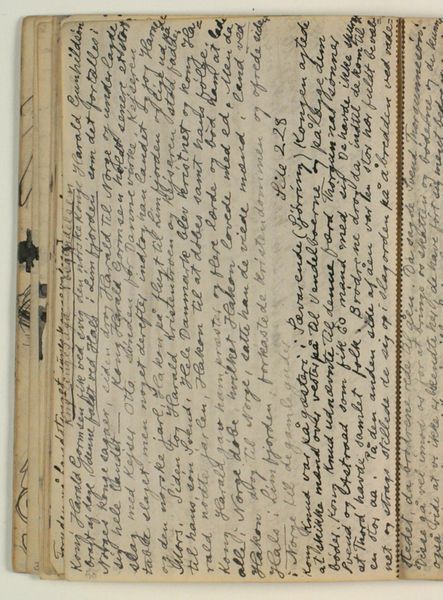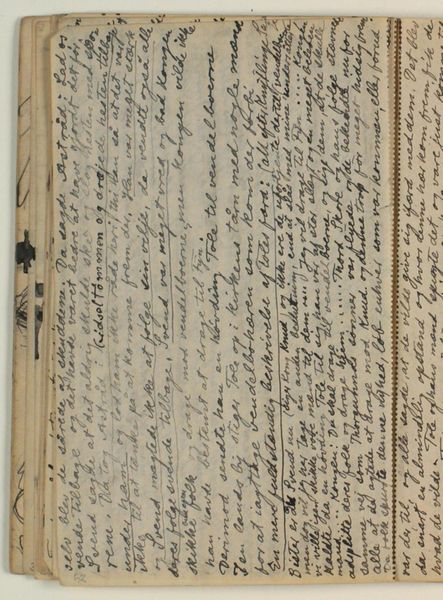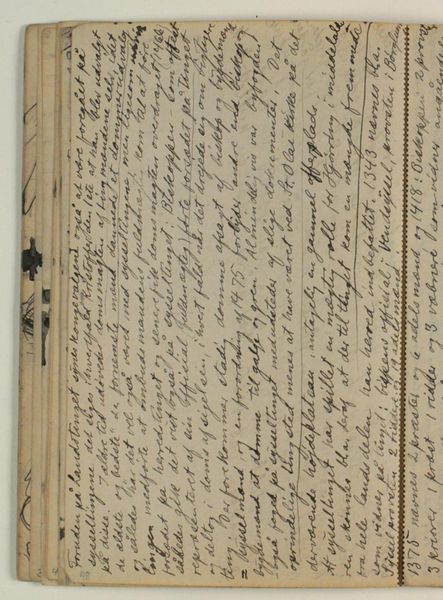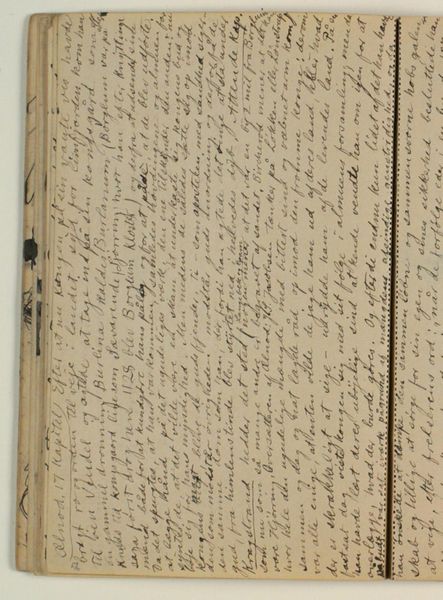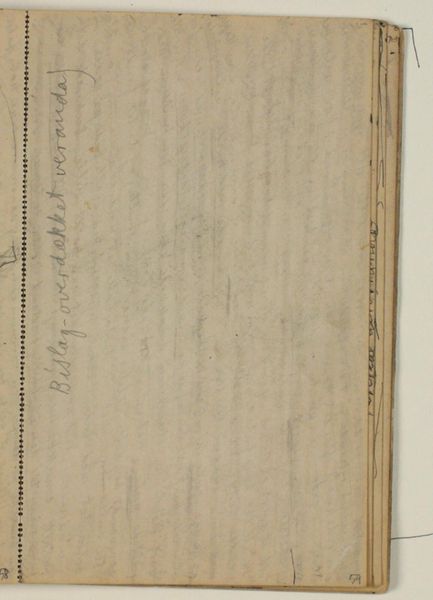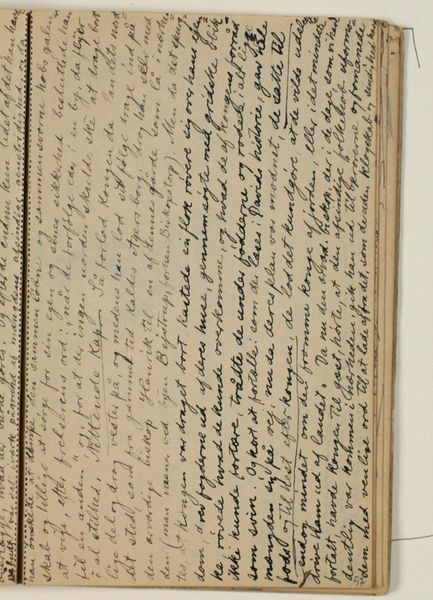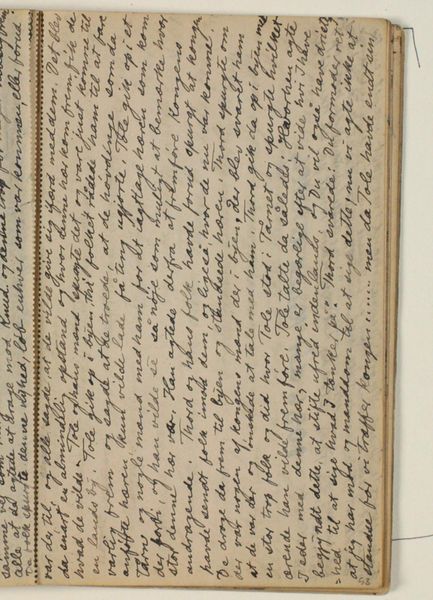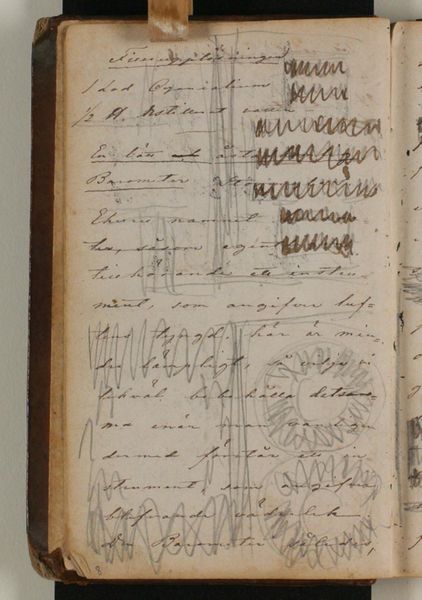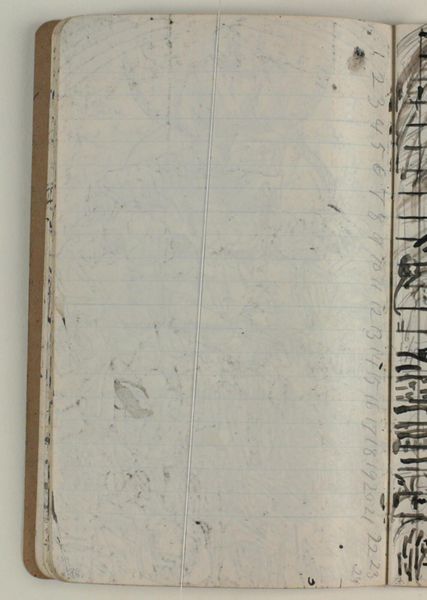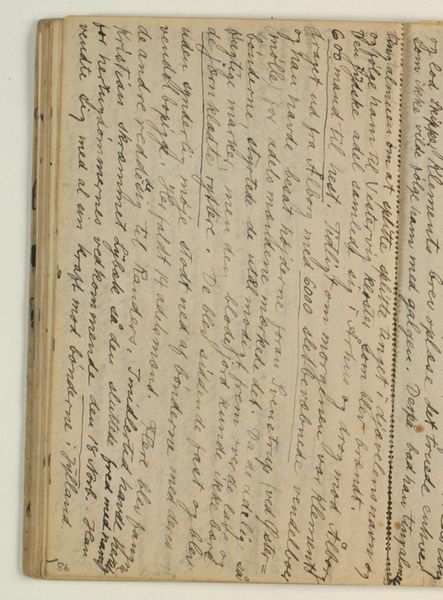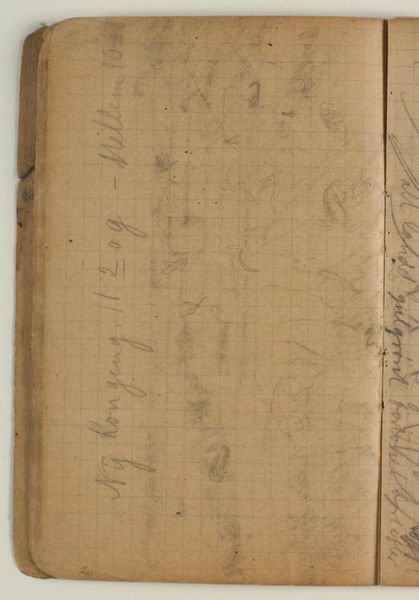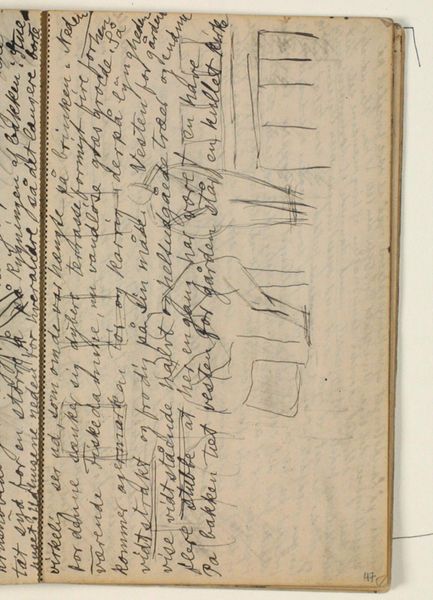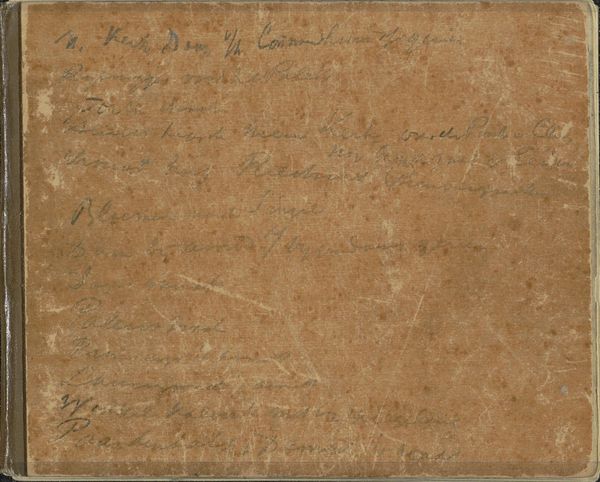
Afskrift fra Blichers novelle "Bettefanden", p. 117 l.17-24, p. 118 l. 7-8, 18-19 & 25, p. 120 l. 26-33, under skriften figurskitser. Fortsætter over midten 1932 - 1935
0:00
0:00
drawing, mixed-media, textile, paper, ink, pencil, pastel
#
drawing
#
mixed-media
#
organic
#
textile
#
paper
#
ink
#
coloured pencil
#
pencil
#
abstraction
#
pastel
#
watercolor
Curator: Here we have "Afskrift fra Blichers novelle 'Bettefanden,'" a mixed-media piece by Niels Larsen Stevns, created between 1932 and 1935. The work, held at the SMK in Copenhagen, incorporates drawing, textile, paper, ink, pencil, colored pencil, pastel, and even watercolor. Editor: My first impression is…claustrophobic. The cramped, overlapping lines of text and figures give me a sense of being overwhelmed. It's almost like peering into someone's frantic, artistic mind. Curator: It is quite dense, isn’t it? We're essentially looking at a page or pages from a sketchbook or journal, where Stevns is transcribing a passage from Blicher’s novella, and then allowing his artistic impulses to run wild around it. Editor: So, Blicher. The "Bettefanden" novella deals with themes of rural life, folklore, and the struggles of ordinary people. How might Stevns’s engagement with this text reflect his own socio-political leanings or commentary on Danish society during that period? Curator: Well, formally, the text becomes almost another design element. The script itself possesses an undeniable aesthetic quality. Notice how the passages act as structural pillars around which his illustrations and doodles congregate, establishing a tangible sense of balance across the piece. Editor: I see that, but to me, the juxtaposition is deliberate. The ordered script represents the established literary canon, while the swirling figures, in pencil, ink, et cetera, suggest a subversion, an unrestrained critique—a desire for new modes of expression that transcend the conventional limits imposed upon both text and life. Look at the chaotic nature of those interwoven sketches in relation to Blicher's neat handwriting; a subtle power struggle for narrative ownership arises before us. Curator: An intriguing idea! Looking at the overall structure, it would be easy to assume that there is a kind of visual hierarchy, but perhaps its free association implies Stevns attempts to integrate objective prose into an intimate artistic universe that renders any sort of prescribed pecking order obsolete. Editor: In this light, Stevns seems intent on deconstructing those societal barriers of old while proposing new ones by letting visual chaos and the political become strangely—albeit brilliantly—intertwined in an unusual game. Curator: Ultimately, it strikes me that there's a certain playful, restless quality to this sketchbook page that captures an essence of constant creative exploration and innovation which resonates with the spirit of early twentieth-century Denmark. Editor: Yes. What emerges, I believe, is not merely art in a traditional context, but an important reflection upon issues central not only to that time—but even the complexities we confront today.
Comments
No comments
Be the first to comment and join the conversation on the ultimate creative platform.
